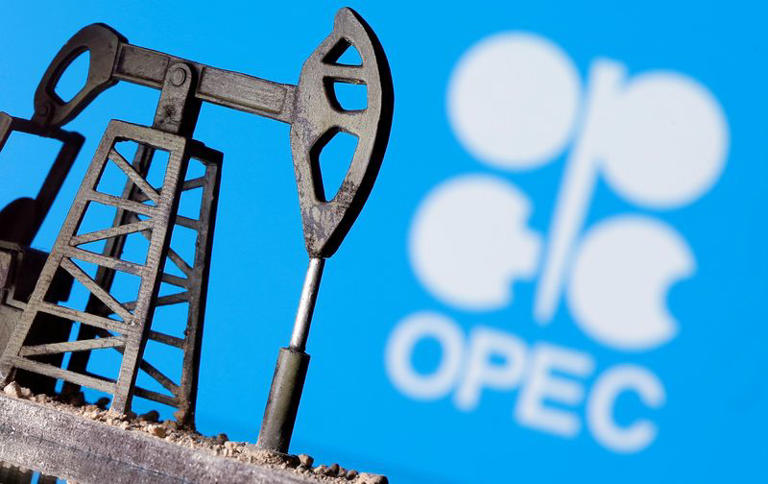Oil prices saw an upward trajectory on Friday, propelled by a confluence of factors that underscored the intricate dynamics influencing global energy markets. This surge followed indications from pivotal OPEC+ members, Saudi Arabia and Russia, signaling their readiness to potentially pause or reverse output agreements. Additionally, an interest rate cut in Europe heightened expectations of a similar move by the U.S., further buoying market sentiment.
Brent crude futures, a benchmark for global oil prices, edged up by 16 cents or 0.2%, reaching $80.03 per barrel. Similarly, U.S. West Texas Intermediate crude futures recorded a 0.2% increase, rising by 16 cents to $75.71 per barrel, as of 0007 GMT.
The positive momentum in oil prices gained traction on Thursday, sparked by efforts from Saudi Arabia and Russia to provide reassurance regarding supply agreements. However, despite this initial boost, oil prices are poised for a weekly loss, primarily due to analysts interpreting Sunday’s OPEC+ meeting as a signal of potential supply increases, which typically exerts downward pressure on prices.
During the OPEC+ meeting, the coalition agreed to extend most production cuts into 2025 while allowing room for gradual unwinding of voluntary cuts from eight members. Speaking at an event in Russia alongside Russian Deputy Prime Minister Alexander Novak, Saudi Energy Minister Prince Abdulaziz bin Salman emphasized OPEC+’s readiness to adjust output levels swiftly in response to market uncertainties.
Novak echoed this sentiment, highlighting that the recent price drop was largely driven by misinterpretation of the agreement and speculative factors, rather than fundamental shifts in supply-demand dynamics.
Jarand Rystad, founder and chief executive of Rystad Energy consultancy, underscored the delicate balancing act facing OPEC+, noting that while the coalition is likely to continue managing the market, further production cuts may be necessary given the softening demand juxtaposed with ample supply.
“The sweet spot for OPEC+ lies within the price range we’ve witnessed – low 80s to high 70s (in U.S. dollars per barrel),” Rystad remarked. Despite some disruptions in Russian oil volumes due to sanctions and geopolitical tensions, Rystad expressed confidence in the market’s ability to absorb these challenges.
The European Central Bank’s decision to implement its first interest rate cut since 2019 on Thursday reverberated across global markets, igniting speculation of a corresponding move by the U.S. Federal Reserve. Lower interest rates typically stimulate economic activity, thereby boosting oil demand and contributing to the positive momentum in oil prices.
Looking ahead, market participants are eagerly anticipating the release of Chinese commodity trade data, which serves as a barometer of demand trends in the world’s second-largest oil consumer after the U.S. Analysts at ANZ Research highlighted the significance of this data release in gauging the trajectory of oil demand amid evolving economic dynamics.
In summary, the upward movement in oil prices reflects a complex interplay of geopolitical developments, supply-demand dynamics, and macroeconomic indicators. Against a backdrop of evolving market conditions, oil markets remain highly sensitive to shifts in policy decisions, geopolitical tensions, and economic data, underscoring the multifaceted nature of the global energy landscape.
